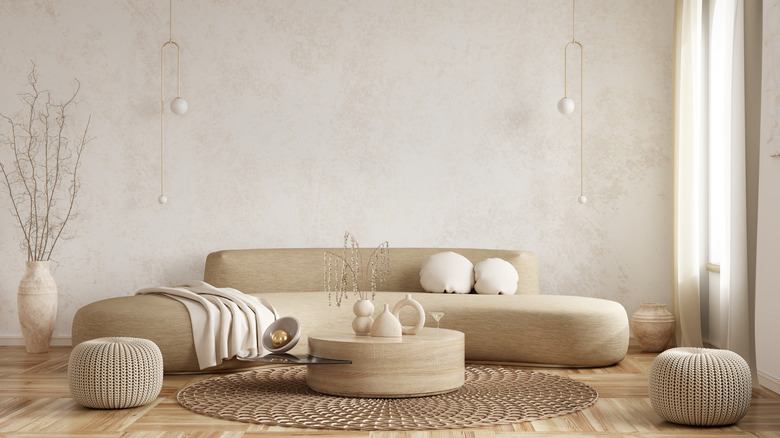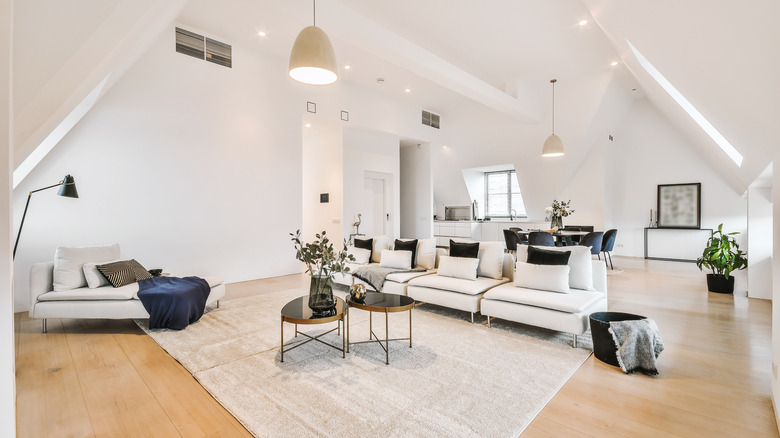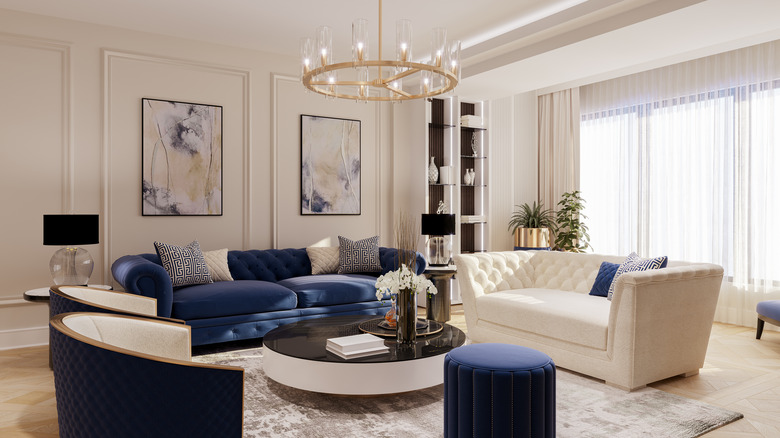How To Use Geometry To Design A Cohesive Space
There are many different ways to design a cohesive space, but what makes the cohesion particularly special is when it can be felt and yet remain unnoticed. According to the experts, this sophisticated interior design technique is achievable for any home — and all you need is geometry.
Now, this is not some new secret in the world of interior design, but rather a generous reminder to incorporate lines, shapes, and patterns when designing your space. After all, geometry is a fundamental element of several interior design forms ranging from art deco to mid-century and, of course, contemporary.
So, how exactly do you use geometry in the context of interior design? Well, with geometry, all you need to do is use repeating shapes and patterns to help unify your space. Most people think geometry is in larger objects, but the magic of geometry really lies in the details. Think of the shape of a doorknob and how that may relate to other shapes throughout the home.
Once you understand this concept, play with it. You can strike a perfect balance using circles or pick something edgier, like triangles. Mind you; it doesn't always have to be just one shape — any combination of shapes used throughout the space will help tether it all together, granted they are consistent with the room's overarching harmony and themes. By the time you finish reading this article, you should be ready to start using geometry in your space.
A case study of geometry and unity in a space
In this case, let's look at something a little more complex: a combination of rectangles and squares. In the image above, a few of these shapes are placed throughout the space. Starting with the foreground, on the left side, you have a rectangular chaise, and in the middle ground, a rectangular sectional is divided up by individual square sofas. You can already see the patterns unfolding, and the neatly placed pillows certainly help bring out the concept of unity through geometry, but what else is at work here?
Take a look at the back right corner — there is a rectangular console with a square frame sitting on top of it. This is not a coincidence. Without a doubt, that has been placed there to balance out the room from that sofa mentioned earlier, sitting in the left corner. We can assume this is not an accident because patterns suggest intention and help us create connections.
To help reinforce this idea, look at the background. Do you see that window above the sink? Probably the emphasized element that started the rectangular theme of the room, as it's a fixed area and a primary light source. Once you understand that by peppering similar shapes in certain areas of the room, you can create cohesion throughout every dimension of your home — you will never look at a space the same way again.
How to implement these concepts into your home
Whether you're watching "The Property Brothers," other interior design-related shows, or even films, you will find inspiration for geometry everywhere. How much or how little may vary, but when it comes to unifying a space, it's ever-present and emotionally impactful. Paying attention to these concepts will help you incorporate the same ideas into your own space.
Start by understanding the space and furniture you have. Then, take note of the dominant shapes and consider how you can balance these with similar or different shapes. If you have a rectangular room, for example, you could balance this by adding some circular or spherical elements, such as a round coffee table or spherical light fixtures. Or, if your space is filled with curves, bring in some straight lines to provide contrast and interest.
Remember that the most important aspect of any design is that it feels comfortable and personal to you. It's important to always emphasize that any space should, above all else, feel like home. Don't be afraid to experiment with different shapes and patterns to see what works best for you. Sometimes, the most unexpected combinations can create the most beautiful spaces. It goes without saying that geometry is an essential tool in the world of interior design. By understanding its principles and knowing how to apply them, you can transform any space into a cohesive and harmonious environment.


